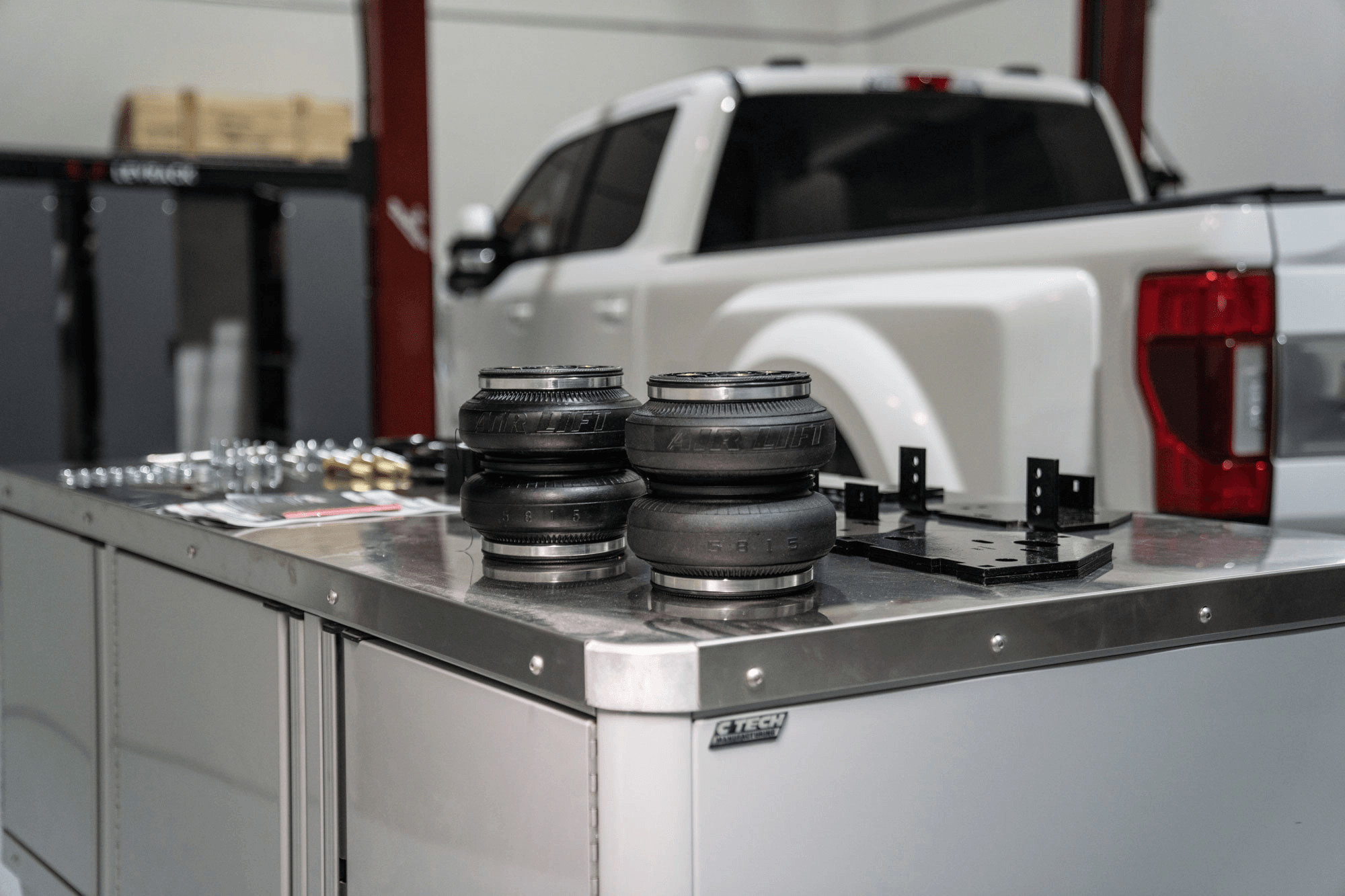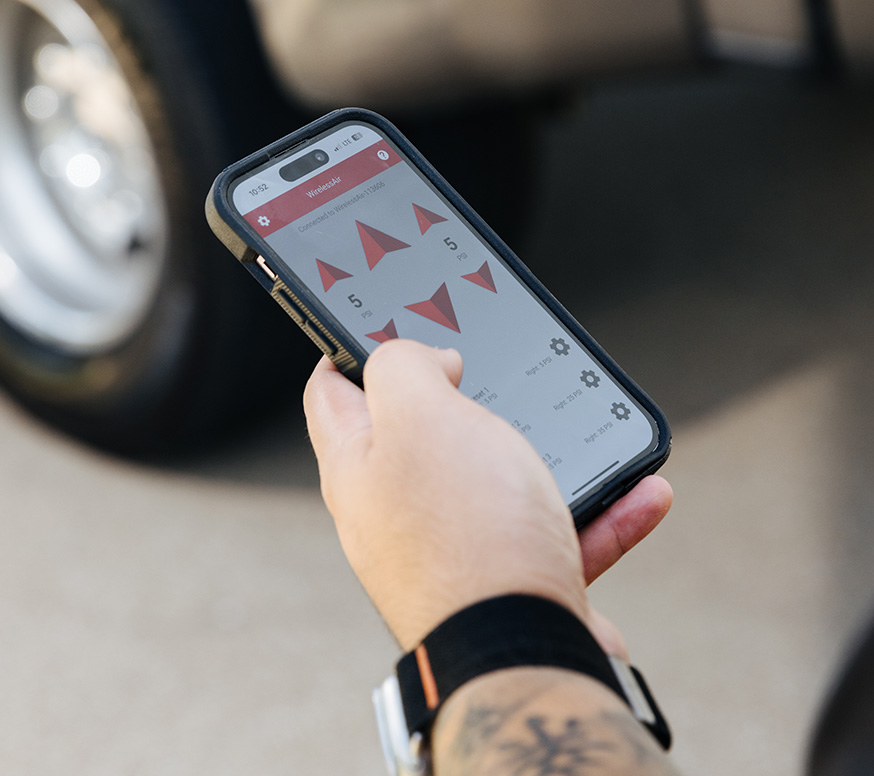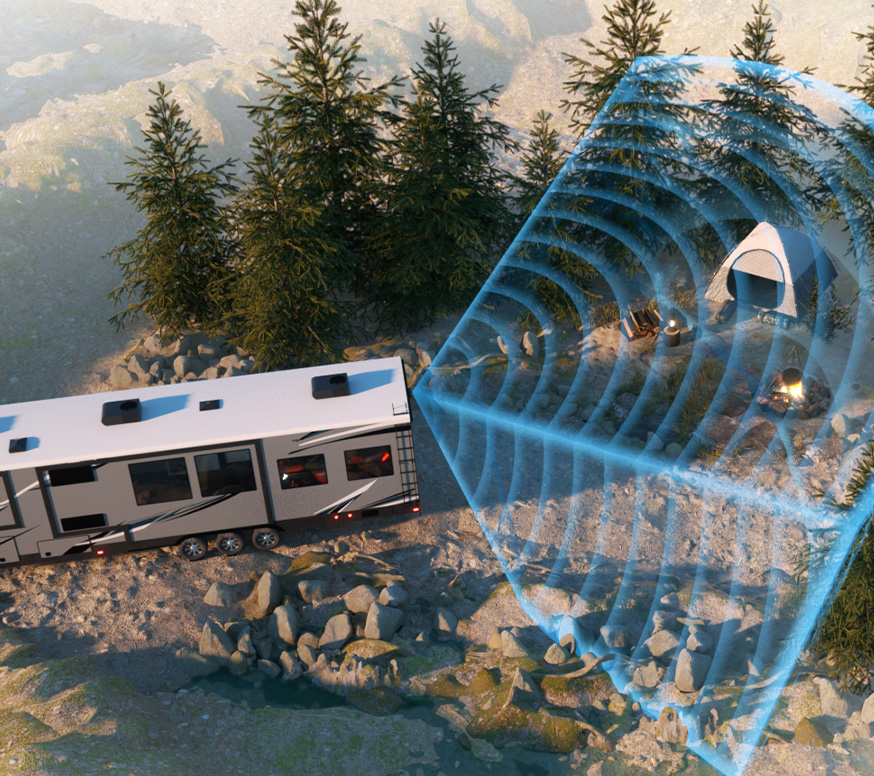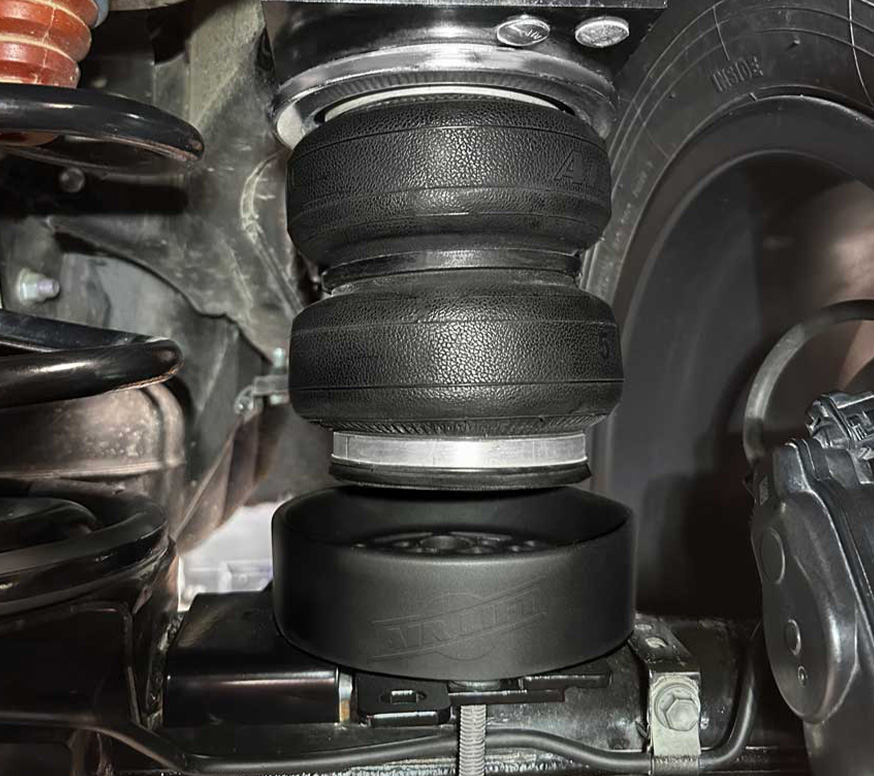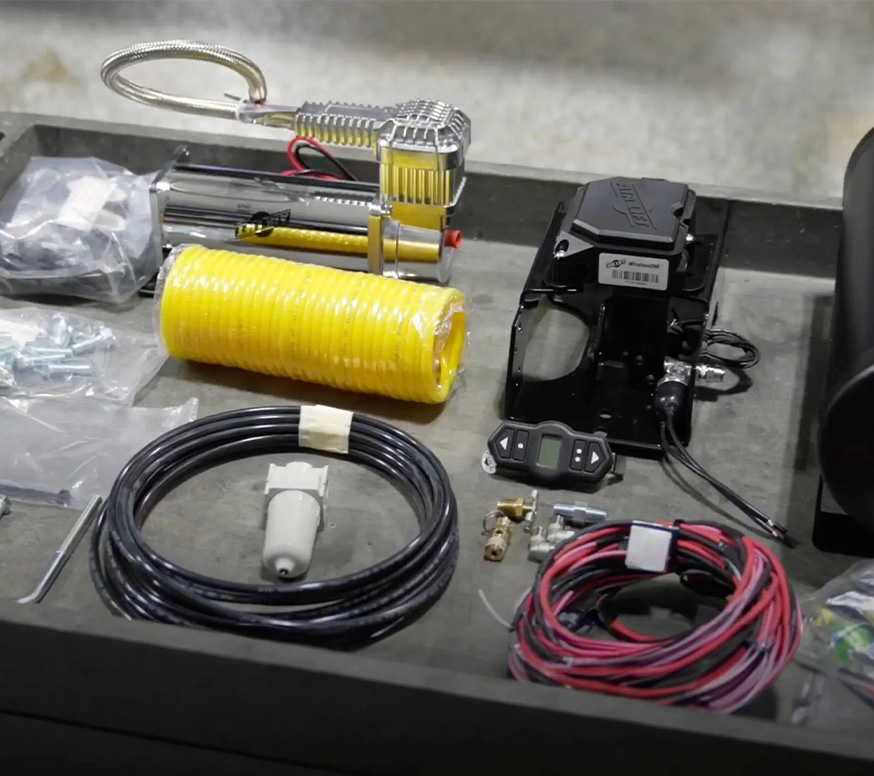
Weight Distribution Bars and Air Springs
2/25/2014
We get asked a lot if air springs can pair safely with weight distribution bars, and how to set up the two so that they work together correctly.
It’s a good question because, as we’ve all felt at one time or another, the downward force of heavy trailer tongue weight can cause the front of your vehicle to lighten up and rise as the vehicle pivots over the rear axle. This causes the vehicle’s weight to be unbalanced and steering traction will be lost, resulting in a dangerous situation due to the lack of control and fishtailing of the trailer.
This is Where Weight Distribution Bars Come In.
Weight distribution bars help to keep the vehicle stable by applying leverage to either side of the suspension, which transfers the load at the rear of the vehicle to both axles and all four tires. This even distribution of weight allows you to get the most out of your hitch and tow up to max gross vehicle weight rating (GVWR).
However, in many situations, heavier weight distribution bars are used to remedy weak suspensions or when additional cargo in the vehicle causes it to sag. Doing this can result in an unbalanced vehicle, excessive tire wear, and an uncomfortable ride.
Now Add Air Lift.
Weight distribution bars can be added to your towing set-up and paired with Air Lift air helper springs to provide maximum stability and control of your towing vehicle and trailer. Air Lift air springs provide load assistance for your sagging vehicle, and the weight distribution bars redistribute the load and balance your vehicle.
Once you’ve gotten the correctly-sized weight distribution bars your weight balance problems will be solved, and adding Air Lift air springs will fix your suspension problems.
Now to Find the Correct Set-Up.
Start by selecting the correct distribution bars.
The bars must be rated for the tongue weight of the trailer (i.e., 500-pound bars for a 500-pound tongue weight). With the vehicle unloaded, take reference measurements at the front and back of the vehicle to the ground. Then connect the trailer and start loading the bars one chain link at a time, keeping the links equal on both sides. As the load on the bars increase, the rear of the vehicle will come up and the front will come down. When the front and rear of the vehicle are as close to the reference measurement as you can get (within ½” at the front), the bars are tensioned correctly.
When the bars cannot be adjusted tightly enough to achieve similar or identical vehicle-height reduction, add air to the air springs to bring the vehicle back to the correct height and balance.
When adding cargo to the vehicle or trailer, do not compensate for inadequate suspension by using higher rated bars, or readjusting the bars, as this will cause for an unbalanced vehicle. Use additional air pressure in your air springs to bring the vehicle back to the correct height.
Fine tuning vehicle stability can be accomplished by an adjustment to the air pressure in 5 PSI increments until the desired “feel” is achieved. Adding air may require readjustment of the bars.
